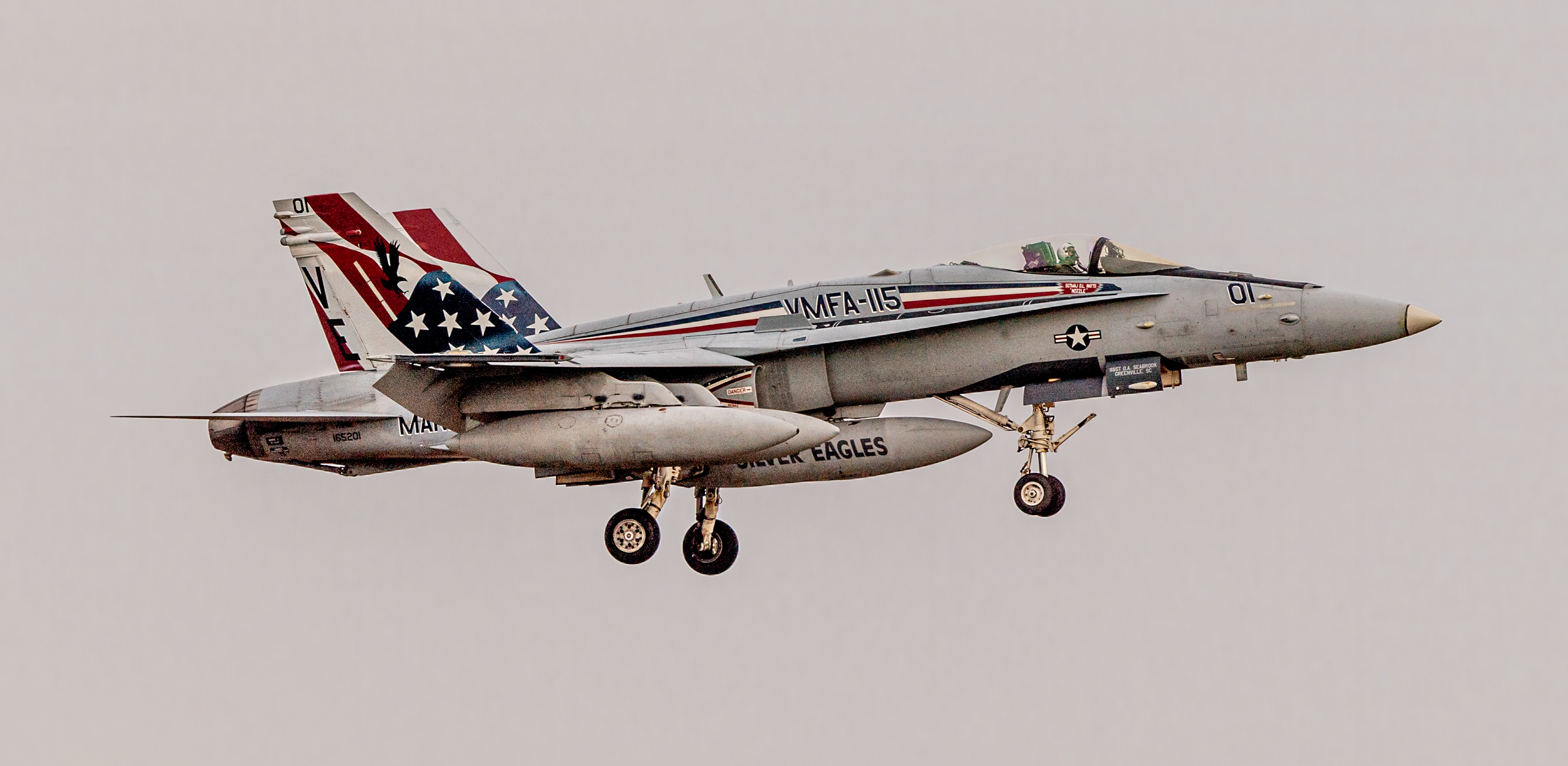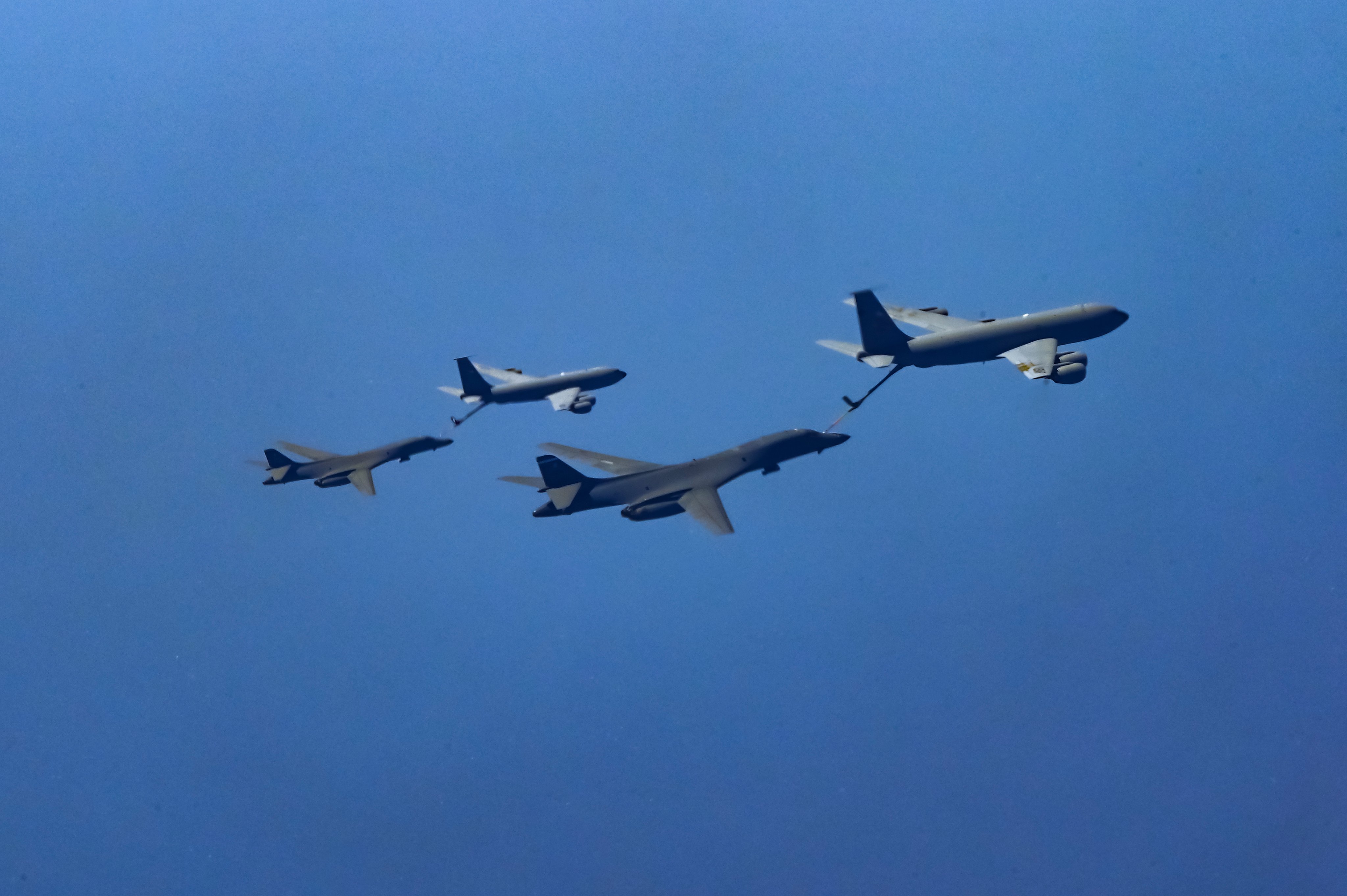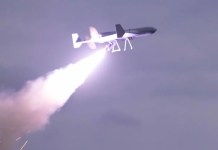The Marine Fighter Attack Squadron (VMFA) 115, also known as ‘Silver Eagles’, deployed its F/A-18C/D Hornets to Prince Sultan Airbase in Saudi Arabia in late December to augment US Central Command’s (CENTCOM) presence in the region.
The Defense Visual Information Distribution Service (DVIDS) released images of the deployment on January 4, 2022.
The 378th Air Expeditionary Wing recently integrated with Royal Saudi Air Forces to execute a combined training exercise at Taif’s King Fahad Air Base, Kingdom of Saudi Arabia.
To learn more, visit: https://t.co/3nGEPXGlSP@USAFCENT | @CENTCOM | @usairforce pic.twitter.com/scfj8vVB3j
— 378 AEW (@378AEW) December 21, 2021
Lt. Col. Tim Miller, the VMFA-115 commander said, “Strategically from this location, we enhance the Combined Forces Air Component Commander’s flexibility and available assets to fluidly move around the theater.”
He went on to say that the deployment will deliver a long- and short-range attack and defensive counter-air capability, bolstering the credible combat power that they hope to present in collaboration with the US’ partners and allies to further stabilize the area.

The arrival of the VMFA-115 will be a key asset that reinforces the region’s global security and operational capacity. The US had deployed the F-18 fighter jets to the same airbase in early 2021. The latest deployment was assigned to the Air Force’s resident 378th Air Expeditionary Wing, which was formed in November 2019 as part of a broader US military expansion in Saudi Arabia.
The commander of the 378th Expeditionary Operations Group, Col. Jason Smith, said this sends a clear and unequivocal message to the region. He also added that the US’ commitment to the Middle East’s peace and stability is unwavering and they are prepared to protect it, if necessary. The ‘Silver Eagles’ have been completely engaged in day-to-day activities.
The fighter planes that VMFA-115 has deployed to Saudi airbase are a combination of single-seat and twin-seat F/A-18C and F/A-18D models.
America’s Response To Regional Tensions
The new deployments are intended to offset threats from destabilizing forces in the region, notably Iran’s Islamic Revolutionary Guard Corps (IRGC), which is involved in poxy wars in the region. In September 2019, a series of unprecedented cruise missile and drone assaults prompted the creation of the Air Expeditionary Wing.
The purpose of American soldiers currently stationed in Saudi Arabia is to prevent future Iranian strikes, such as the missile and drone raid on Saudi oil facilities in September 2019, which briefly halted the kingdom’s oil output and put world supplies at risk.
The incident was blamed on Iran by American and Saudi officials, although Tehran denied any links to it. Drones and cruise missiles were used in the strike, which hit Abqaiq and Khurais in eastern Saudi Arabia simultaneously.
The 378th AEW was primarily established to enhance US troops in Saudi Arabia, signifying a stronger and long-term engagement in the Kingdom and improving their ability to respond to global emergencies.
The wing is clearly intended to be a combined force, allowing these Marine Corps planes to smoothly blend with an Air Force command. In the event of a crisis, there is also built-in capacity for the quick intake of various types of aviation assets.

The deployment of Hornets coincided with Iran’s recent launch of three “research devices” into orbit using a rocket. With tensions in the region escalating, it was only natural for the United States to be displeased with the situation.
The US quickly expressed its displeasure over Iran’s space launch, claiming that there is a major possibility that Tehran is beefing up its ballistic missile program, one of which could one day be used to transport a nuclear warhead.
Moreover, the Houthi militia, which is supported by Iran, has been highly active in the Red Sea and the Gulf of Aden, launching a variety of attacks on commercial and military vessels.
In January 2021, the US military said that it was considering utilizing a Red Sea port and two new airfields in Saudi Arabia due to rising tensions with Iran. It’s probable that the Hornets’ current deployment may be used to patrol the Persian Gulf.
- Contact the author at ashishmichel@gmail.com
- Follow EurAsian Times on Google News




